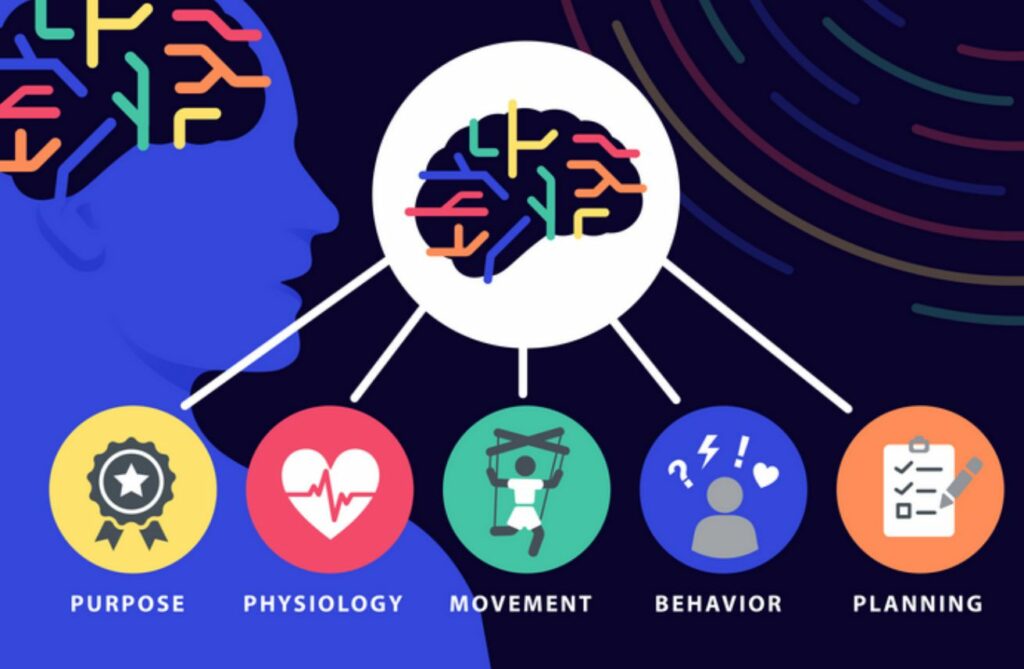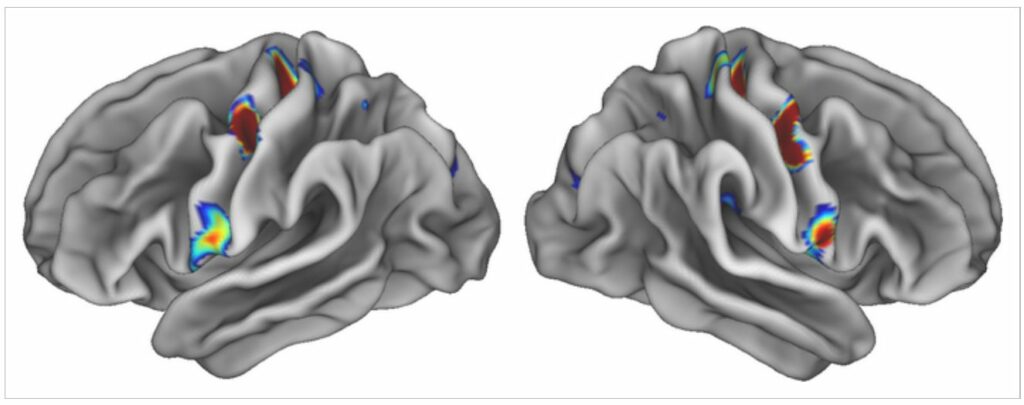How Our Brains Harmonize Thoughts, Emotions, and Physiology? New Research Discovers Brain’s Master Network for Mind-Body Balance
New research reveals brain regions that merge planning, intention, physiology, behavior, and movement.
A tranquil body leads to a tranquil mind, as mindfulness practitioners often suggest. A groundbreaking study conducted by researchers at Washington University School of Medicine in St. Louis supports this concept, demonstrating that the connection between the body and mind goes beyond mere theoretical understanding.
The research uncovers how areas of the brain responsible for movement are intricately connected to networks that govern thinking, planning, and control of involuntary bodily functions like blood pressure and heart rate. This discovery signifies a tangible intertwining of the body and mind within the brain’s very architecture.
The study, which appeared in the journal Nature today, has the potential to shed light on perplexing occurrences. For instance, it may elucidate why anxious individuals often feel compelled to walk to and fro, why activating the vagus nerve—responsible for overseeing functions of internal organs like digestion and heart rate—can relieve depression, and why those who engage in regular physical activity tend to have a more optimistic perspective on life.
“People who meditate say that by calming your body with, say, breathing exercises, you also calm your mind,” adds first author Evan M. Gordon.
“Those sorts of practices can be really helpful for people with anxiety, for example, but so far, there hasn’t been much scientific evidence for how it works.”
But now they have “found a connection.”
They “found the place where the highly active, goal-oriented ‘go, go, go’ part of your mind connects to the parts of the brain that control breathing and heart rate. If you calm one down, it absolutely should have feedback effects on the other.”

Gordon, alongside senior author Nico Dosenbach, MD, PhD, an associate professor of neurology, initially embarked on a journey to confirm the long-standing map of brain areas controlling movement through the use of advanced brain-imaging techniques. They did not anticipate addressing the timeless philosophical debates surrounding the connection between the body and the mind.
Back in the 1930s, neurosurgeon Wilder Penfield, MD, developed a map of the brain’s motor regions by administering minor electric shocks to the exposed brains of patients undergoing surgery. He observed their reactions and concluded that specific body parts twitched when a thin strip of tissue on either side of the brain was stimulated. Remarkably, these control areas in the brain were organized in the same sequence as the body parts they governed, with toes at one end and the face at the opposite end. This representation of the brain’s motor regions, known as the “homunculus” or “little man,” has since become a cornerstone in neuroscience literature.
Gordon, Dosenbach, and their team recreated Penfield’s research using functional magnetic resonance imaging (fMRI). By enlisting seven healthy individuals, they conducted extensive fMRI brain scans as participants rested or engaged in various activities. The researchers then constructed personalized brain maps using the high-density data collected from these scans. To further validate their findings, they cross-referenced their results with three major, publicly accessible fMRI databases—the Human Connectome Project, the Adolescent Brain Cognitive Development Study, and the UK Biobank—which collectively contain around 50,000 brain scans.
Unexpectedly, the researchers found that Penfield’s original map was not entirely accurate. Although the locations controlling the feet, hands, and face aligned with Penfield’s findings, there were an additional three regions within the brain’s motor area that did not appear to be directly linked to movement.
In addition, the areas not associated with movement displayed a distinct appearance compared to those involved in motion. These regions seemed slimmer and exhibited strong connections among themselves as well as with other brain regions responsible for cognition, strategizing, mental stimulation, pain, and the regulation of internal organs and functions like blood pressure and heart rate. Subsequent imaging experiments revealed that these non-movement zones didn’t show activity during actual movement, but were activated when individuals contemplated moving.
“All of these connections make sense if you think about what the brain is really for,” Dosenbach adds. “The brain is for successfully behaving in the environment so you can achieve your goals without hurting or killing yourself. You move your body for a reason. Of course, the motor areas must be connected to executive function and control of basic bodily processes, like blood pressure and pain. Pain is the most powerful feedback, right? You do something, and it hurts, and you think, ‘I’m not doing that again.’”
Dosenbach and Gordon named their groundbreaking discovery as the Somato-Cognitive Action Network (SCAN). To delve into the origins and evolution of this network, they examined the brain scans of a newborn, a 1-year-old, and a 9-year-old child. Additionally, they assessed previously gathered data from nine monkeys. The newborn’s brain scan did not reveal the presence of the SCAN network, while it became apparent in the 1-year-old and closely resembled an adult version in the 9-year-old. In contrast, the monkeys exhibited a more basic version of the system, lacking the intricate connections observed in humans.
“This may have started as a simpler system to integrate movement with physiology so that we don’t pass out, for example, when we stand up,” Gordon adds. “But as we evolved into organisms that do much more complex thinking and planning, the system has been upgraded to plug in a lot of very complex cognitive elements.”
Hints pointing to the presence of a mind-body network have long been present, dispersed among disparate research papers and enigmatic findings.

“Penfield was brilliant, and his ideas have been dominant for 90 years, and it created a blind spot in the field,” adds Dosenbach. “Once we started looking for it, we found lots of published data that didn’t quite jibe with his ideas, and alternative interpretations that had been ignored. We pulled together a lot of different data in addition to our own observations, and zoomed out and synthesized it, and came up with a new way of thinking about how the body and the mind are tied together.”
Source: 10.1038/s41586-023-05964-2
Image Credit: Sara Moser/Washington University
